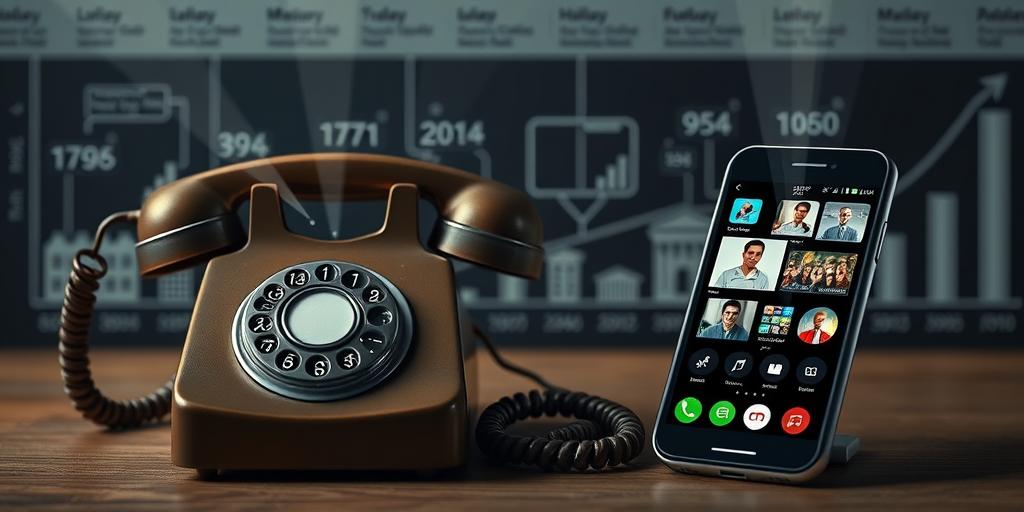Imagine a world without instant messaging, video calls, or even the humble mobile phone. It’s hard to fathom, isn’t it? Communication gadgets have revolutionized the way we connect with each other, transforming our lives in countless ways. From the early days of the telegraph to the sophisticated smartphones of today, the evolution of communication technology has been a fascinating journey. Let’s explore how these gadgets have shaped our communication landscape, its impact on our lives, and what the future holds for this ever-evolving field.
The Evolution of Communication Gadgets
The Dawn of Communication: Telegraphs and Telephones
Before the advent of electronic communication, messages were carried by messengers, ships, or pigeons. The telegraph, invented in the mid-19th century, was a groundbreaking innovation that allowed for the transmission of messages over long distances using electrical signals. This invention marked the beginning of a new era in communication, facilitating faster and more efficient communication than ever before. The telephone, invented in 1876 by Alexander Graham Bell, further revolutionized communication, enabling real-time voice conversations over long distances. These early communication gadgets laid the foundation for the technological advancements that followed.
The Rise of Mobile Communication: Cell Phones and Smartphones
The invention of the mobile phone in the 1970s marked a turning point in the history of communication technology. Early cell phones were bulky and expensive, but they offered the convenience of making calls from anywhere with cellular coverage. Over time, cell phones became smaller, more affordable, and packed with new features. The arrival of the smartphone in the early 21st century was a game-changer. These devices combined the functionality of a cell phone with internet access, multimedia capabilities, and a wide range of applications. Smartphones have become indispensable tools for communication, entertainment, and information access.
The Digital Age: The Internet and Social Media
The internet, a global network of interconnected computers, has had a profound impact on communication. It has enabled the sharing of information, ideas, and experiences on an unprecedented scale. Social media platforms, such as Facebook, Twitter, and Instagram, have further transformed the way we connect and interact with each other. These platforms allow us to build communities, share news and updates, and engage in discussions with people from all over the world.
Impact of Gadgets on Communication
Increased Accessibility and Convenience
Communication gadgets have made communication more accessible and convenient than ever before. We can connect with friends, family, and colleagues instantly, regardless of location. Mobile phones have eliminated the need for physical addresses and landlines, allowing us to stay connected while on the move.
Enhanced Communication Speed and Efficiency
The speed and efficiency of communication have increased dramatically thanks to communication gadgets. Emails, instant messaging, and video calls allow for faster and more efficient communication than traditional methods like letters and phone calls.
Global Connectivity and Cultural Exchange
Communication gadgets have fostered global connectivity and cultural exchange. We can interact with people from different cultures and backgrounds, learn about their customs, and share our own. This increased interconnectedness has broadened our perspectives and fostered understanding and empathy across borders.
Challenges of Digital Communication
While communication gadgets offer numerous advantages, they also present some challenges. The constant connectivity can lead to information overload, distraction, and a sense of being overwhelmed. The anonymity and lack of nonverbal cues in digital communication can sometimes lead to misunderstandings and conflict. It’s essential to be mindful of these challenges and practice responsible digital communication habits.
The Future of Communication Gadgets
Emerging Technologies and Innovations
The future of communication gadgets is filled with exciting possibilities. Technologies like 5G, artificial intelligence, and virtual reality are poised to revolutionize the way we communicate. 5G networks offer faster speeds and lower latency, enabling real-time communication and immersive experiences.
The Role of Artificial Intelligence
Artificial intelligence is playing an increasingly important role in communication. AI-powered chatbots and virtual assistants can automate tasks, provide personalized recommendations, and translate languages in real time. AI is also being used to enhance voice recognition, speech synthesis, and natural language processing, making communication more intuitive and efficient.
Ethical Considerations and Future Challenges
As communication technology continues to evolve, it’s crucial to address ethical considerations and potential challenges. Issues like data privacy, cybersecurity, and the potential for misinformation require careful consideration and responsible development. It is important to ensure that these technologies are used ethically and responsibly, promoting inclusivity, accessibility, and the well-being of all.
The advancements in communication technology have undoubtedly made our lives easier and more connected. We can communicate with anyone, anytime, anywhere. However, it’s vital to be mindful of the challenges and ethical considerations associated with these technologies. By using communication gadgets responsibly, we can harness their power to foster understanding, collaboration, and a more connected world.




